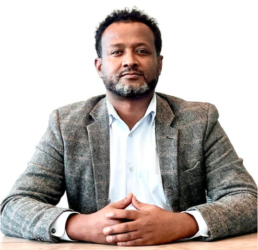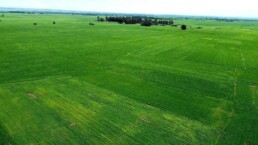How Can the Horn Take the Lead in Global Counter-Terrorism?
How Can the Horn Take the Lead in Global Counter-Terrorism?
Staff Writer
The Horn of Africa is one of the most heavily securitized regions in the world. The tiny nation of Djibouti, among others, hosts eight military bases of the global north; others, emerging and old powers strive to get a slice of the proverbial geostrategic pie, that is the Horn. The Red Sea sits between two continents, bordering six countries in Africa, and four in the Middle East, and approximately 10 percent of all global trade passes through its waters, amounting to 881 billion USD. The total GDP of the region, as well as international trade across this line, is projected to grow by three and five-fold respectively within two decades.
Given its strategic trade and military relevance, the region grapples with significant security challenges including one of the world’s well-known fights against terrorism. The threat of terrorism to the Horn of Africa can be traced back more than two decades. This regional security threat, however, garnered it attracted the attention of the international superpowers when the US was involved in the war against terrorism. Later, Al-Shabaab attacked the US embassy in Nairobi displaying the group’s capability. Somalia, where al-Shabaab is located, is at the epicenter of the threat of terrorism to the peace and security of people in the region. The group has been a close ally of the Islamic State (ISIS) and Al-Qaeda- known to operate in the Middle East and the Levant.
Since setting foot in Somalia, the US and its allies were heavily invested in counter-terrorism efforts in the Horn. In 2019, the US and Ethiopia signed a memorandum of understanding to exchange terrorist screening information. The counterterrorism efforts by the combined forces of the states in the region and external powers have been vibrant. US President Joe Biden has recently authorized the US military to redeploy hundreds of Special Operations Forces to Somalia. Countries in the Horn, particularly Ethiopia, have been significant partners of the US mission in the region, nonetheless, terrorism has been rampant on the continent.
In May 2022, the African Union convened in Malabo for an Extraordinary Summit on Terrorism and Unconstitutional Changes in Africa. It was noted during this meeting that terrorism has increased on the continent since 2021. AU Commission Chairperson Musa Faki Mahamat noted during this meeting that terrorism has continued to flourish because of the lack of inter-African solidarity with the countries fighting terrorism and failure to honor commitments. In addition, there are also helpful measures that the international community can apply in fighting terrorism in Africa and other parts of the world.
Given the increase in terrorist attacks and the proliferation of terrorist groups, the continent stands at a crossroads when it comes to the fight against terrorism. For instance, Sub-Saharan Africa accounts for 48% of global deaths from terrorism. However, the international scramble for the region has made counter-terrorism efforts an uphill battle for Africa in general, and the Horn in particular. The critical question remains: shall Africans take their fight against terrorism into their own hands or remain insecure for generations?
What next in this effort?
The African Union has recommended the formation and operation of the African Standby Forces, and the provision of necessary support to the existing forces will lessen the continent’s dependence on international assistance in the fight against terrorism. The African Union must first provide an apt political leadership to coordinate cross-country communication and intelligence to enhance the collective capacity to effectively fight terrorism domestically, regionally, and as a continent.
Legal frameworks also need to be put in place to blacklist/arrest people, entities, and institutions, with links to the vast terrorist networks across the continent. Policymakers will also need to consider illicit financial flows, arms smuggling, and organized crime when laying out the general framework.
Honing in on East Africa, the Western-led approach to countering terrorism in the region focused on targeting key figures in the various movements, with the aim of weakening their network proved ineffective. This is primarily because the intervention did not include local people, who are an integral part of the fight. Although the killing of strategic leaders creates a power temporary power vacuum, terrorist cells have adapted to this strategy by organizing in loose, semi-autonomous small groups. These groups learned to operate regardless of who gets killed.
Functional coordination between African countries, agreeing to a consistent contribution in capacity: human and monetary, as well as enhanced economic interdependence would help stifle terrorism in the long run. This way, African nations can avoid exploitation by interest groups and entities that show interest in joining counter-terrorism efforts. The Horn, as it pertains to Al-Shabab and its affiliates, has to be the primary stakeholder in maintaining regional peace and security.
Share
The Bittersweet Chinese Loans

Getachew obtained his first degree from Addis Ababa University’s Political Science and International Relations department PSIR. He holds an M.A. in International Relations from Addis Ababa University and an M.A. from the University of Leeds, UK, in Political Communication. Getachew served as Director General at the Ethiopian Ministry of Foreign Affairs and worked as Secretariat for the Foreign Policy Review Team. Upon Joining the private sector, Getachew worked as a senior political editor at The Reporter Newspaper in Ethiopia.
China has emerged as an alternative source of finance in a stringent system of global development finance. Apart from bilateral financiers, multilateral lenders for national development programs came from the World Bank and the International Monetary Fund (IMF) – which are two sides of the same coin. Money from these institutions comes with certain spending and policy adjustment requirements that align with the political interests of the West, which prioritizes access.
It was in this context that the Chinese appeared to be a blessing to African countries in becoming preferred creditors to developing countries, particularly those with ambitions of economic transformation. In Africa, over the past decade, more than 3,000, largely critical infrastructure projects have been financed by China, according to China Aid. Between 2000 and 2017, China disbursed nearly 150 billion dollars in loans to African countries, an average of about USD 8.4 billion a year.
These loans from China complement the Chinese Belt and Road Initiative – a large infrastructure project stretching from East Asia to Europe. Ethiopia is a central hub for China’s Belt and Road Initiative. Currently, there are about 400 Chinese construction and manufacturing projects in Ethiopia, valued at over 4 billion. Much of Ethiopia’s air, road, and rail infrastructure is financed and built by Chinese loans/co-tractors. Nonetheless, concerns exist about the sustainability of Ethiopia’s estimated 13.7 billion dollars of Chinese debt, second only to Angola’s in Africa.
Zambia is on its way to becoming the first post-COVID pandemic sovereign default in Africa in a decade. Pressure also mounted on other debt-burdened countries during the coronavirus pandemic. This debt crisis has revealed the fragmented nature of Chinese lending as well as Beijing’s reluctance to fully align with global debt relief plans. China has lent money to almost every African country and some have taken up to five billion USD over the past ten years. But following the COVID pandemic, Beijing’s involvement in a debt service suspension initiative from the G20 group of the world’s largest economies has been slow. Several creditors’ committee meetings were either canceled or postponed as a result of Chinese absence.
Ethiopia has also been one of the top borrowers, borrowing at least 13.7 billion dollars between 2002 and 2018 for infrastructure development such as roads and railways to sugar factories. Following a fresh negotiation Prime Minister Abiy Ahmed launched immediately after assuming power, over the past two years, China has pledged to restructure some of Ethiopia’s loans. This in part, as experts say, is made possible because of the strong political ties between the two countries Ethiopia was the first African country to host a Forum on China-Africa Cooperation meeting, held in 2003. In 2012, China funded and built the 200 million dollars African Union headquarters in Addis Ababa. In 2005, they entered a defense agreement on joint training, technology exchange, and peacekeeping operations.
The West insists that Chinese lending should be understood as a product of “fragmented authoritarianism” and the continent is “captive to Beijing’s wishes and demands” due to its huge debt. They also believe that infrastructure built by Chinese financing is intended to “serve China’s ambitions to write the rules of the next stage of globalization.”
They assess that China has been using cheap secret loans to get access to African resources. Hence, the West recommends that China needs to rethink its strategy otherwise it will end up with a huge pile-up of debt that will be very difficult to restructure and even put many Chinese state enterprises at higher risk of default. A prime example of investments facing challenges is the Ethio-Djibouti Standard Guage Railway. Costing more than 4.5 billion dollars, the railway was partly financed through 2.5 billion dollars in commercial loans from China Eximbank.
The railway uses a package of Chinese trains, construction companies, as well as Chinese standards and specifications—and is currently operated under a six-year contract by a joint venture of the two Chinese contractors. But the repayment period for this railway reached even before the railways began transporting goods to and from Djibouti. PM Abiy was vocal about such arrangements and expressed his preference for concessional loans over commercial, non-concessional loans. To his credit, in late 2018, Ethiopia negotiated with Beijing to restructure the Eximbank loan terms, extending the repayment period from 15 to 30 years.
Immediately so, Ethiopia vowed to avoid non-concessional loans that have short amortization periods and large interest rates. Contributors to Ethiopia’s challenges in paying its debt are long-term foreign exchange shortage, and poor export performance. Despite its delayed Chinese debt repayments which later got restructured, Ethiopia has reportedly never missed a payment to its European creditors, where the penalties for future access to credit are harder.
Nonetheless, the EximBank of China withheld about 339 million dollars in credit to Ethiopia on worries disbursing additional credit may exacerbate the country’s already growing debt and repayment problems. EximBank said it was withholding the money until the restructuring negotiations called for by the creditors’ committee are finalized. This affected a total of 12 projects in the transportation and power sectors. In the meantime, Ethiopia is looking at other forms of financing its much-needed infrastructure by resorting to public-private partnerships. This is because, given Ethiopia’s reliance on China as a source of investment and finance, issues affecting Chinese firms may have a deep impact on Ethiopia’s future development.
While the debt challenges are interpreted differently by people of different outlooks, Teshome Toga, Ethiopia’s Ambassador to China, told a Chinese think tank in May 2022 that, the debt problem is not in the predatory lending from China but in the capacity problems of the African side that lead to an accumulation of loans. He also made clear that for many African governments, the benefits of the relationship outweigh the hazards, and that what is wanted is more cooperation – not less.
Share
African food insecurity and the Russia Ukraine war
African food insecurity and the Russia Ukraine war
Staff Writer
The Russian-Ukraine war has exposed the depth of Africa’s food insecurity. But its leaders remain unmoved. The war in Ukraine has illucidated several political and economic vulnerabilities from Europe to China, the US, and Africa. While the type of impact from this war varies significantly across the board, the magnitude of the challenges to communities remains similar. There are daily reports showcasing how the brunt of these consequences is borne by Europe as energy prices reach unbearable levels for industries and households. As Germany alone shells out 200 billion euros to subsidies energy bills and put a break on inflation, the potential of this energy war to bring economic sectors to a halt and fuel social instability has dramatically altered the priority list for European policymakers.
Energy security and energy sovereignty are now the most critical elements of European collective interest which has already led to the EU eyeing gas-rich Algeria in North Africa and other Caucasus energy hubs as substitutes for Russian gas and providing incentives for renewables.

Africa is yet to be harmed by direct reductions in energy supplies. But impending food insecurity has suddenly unraveled, threatening the stability of governments and positive gains from decades of economic growth. Disruptions to wheat supplies are having major repercussions on food security across the continent. A report by the International Centre for migration policy development noted that Sudan saw the price of bread nearly doubling, with some bakeries forced to close following a 60 percent drop in wheat imports since the beginning of the war. The report shows that the fragile stability in Libya could be threatened by food insecurity as it imports 75 percent of its wheat from Ukraine and Russia and supply disruptions have led to increases in bread prices. It singled out Somalia, Sudan, Mauritania, Congo, Kenya, and Eritrea as heavily dependent on wheat imports from Eastern Europe and thus significantly vulnerable to impending food insecurity as fallout from supply disruptions. Ukraine alone accounts for 10% of global wheat production and exports large quantities to North African states, according to calculations by the Kiel Institute for the Kiel-based World Economy.
Prices of bread retain not just nourishment value but also socio-political currency in many African countries. Increments in bread cost had an infamously notable impact in the Arab spring and several North African countries as a result continue to subsidize bread prices to keep disenfranchised populations away from street-level protests. As such, cheap large quantities of Ukrainian and Russian wheat to Africa have provided over 40% of Africa’s demand, according to a New York Times report. A FAO report indicates in 2021, Russia and Ukraine ranked among the top three global exporters of wheat, barley, maize, rapeseed and rapeseed oil, sunflower seed, and sunflower oil. In the African context, its wheat imports have increased by 68 percent to 47 million tonnes from 2007 to 2019, according to the UN.
They show that Africa’s vulnerability due to its significant dependence on non-African sources for food is quite disconcerting. Assessments indicate that African countries imported 54.8 million metric tons of wheat in 2021 while its total production stood at 25.7 million metric tons. It is also reported that 32 percent of total African wheat imports come from Russia and 12 percent from Ukraine; with 25 African countries importing more than a third of their wheat from Ukraine and Russia. Egypt is the largest importer of wheat globally, with 85 percent of its supply provided by Russia and Ukraine, according to research conducted by ICMPD. African Development Bank AfDB warned in April of this year that the continent’s wheat prices have increased by 60%, estimating that the continent will lose up to $11 billion worth of food due to the conflict.
Fertilizer, a critically strategic input without which agricultural production fails, is also imported from Russia, which ranks as the world’s top exporter of nitrogen fertilizers, the second leading supplier of potassic fertilizers, and the third largest exporter of phosphorous fertilizers, according to FAO. Severe shortages of fertilizers for African farmers are expected to cause reductions in harvests in 2023, further straining availability and pushing up prices.
The fact that African countries or the African Union have not placed the continent’s dire dependency on imports for its food supply as their top security and strategic challenge will have multiple ramifications. With Africa spending about USD 35 billion a year on food imports, according to the world bank, the major part of African farmlands is still used to grow coffee, cocoa, and cottonseed oil for export while staple crops of the African diet, wheat, and rice, mainly come from outside of the continent. The growing cost is unsustainable and the risk of instability in the most fragile parts of the continent is too heavy to put the issue on the back burner.

In essence, the wake-up call the energy crisis provided to Europe is what the grain crisis could do to Africa if policymakers seize it as a window of opportunity for policy shifts toward putting more political focus and resources into ensuring food sovereignty. Africa’s food security is tied to a permanent geo-strategic hotspot is a stranglehold that can be avoided by investing in the farms of Africa. With wheat consumption in Africa projected by the UN to reach 76.5 million tonnes by 2025, of which 48.3 million tonnes or 63.4 percent is projected to be imported outside of the Continent, there is a critical need to reevaluate the traditional idea of Africa importing its food while it possesses 60 percent of the global arable land to insulate itself from external shocks where it maintains little or no influence.
While Antonio Guterres’s warning in March of this year that many African countries were at risk because of their dependence on Russia and Ukraine for food may not be taken seriously, lessons from Ethiopia, where a government-led program to massively expand wheat production is expected to turn the country into grain self-sufficiecy as early as 2023, could propel the issue of food sovereignty in Africa to the front of debates. Ethiopia plans to reverse an annual practice that sees it importing 85% of its wheat demand. If its self-sufficiency drive becomes successful as planned, the policy implications in trade, security, and geopolitics will be far-reaching and consequential beyond Africa. Considering how strongly food insecurity is linked to migration and the refugee crisis in Europe, a favorite punching bag for surging right-wing politicians, the west should also support African best practices in agriculture as an act of self-interest.

